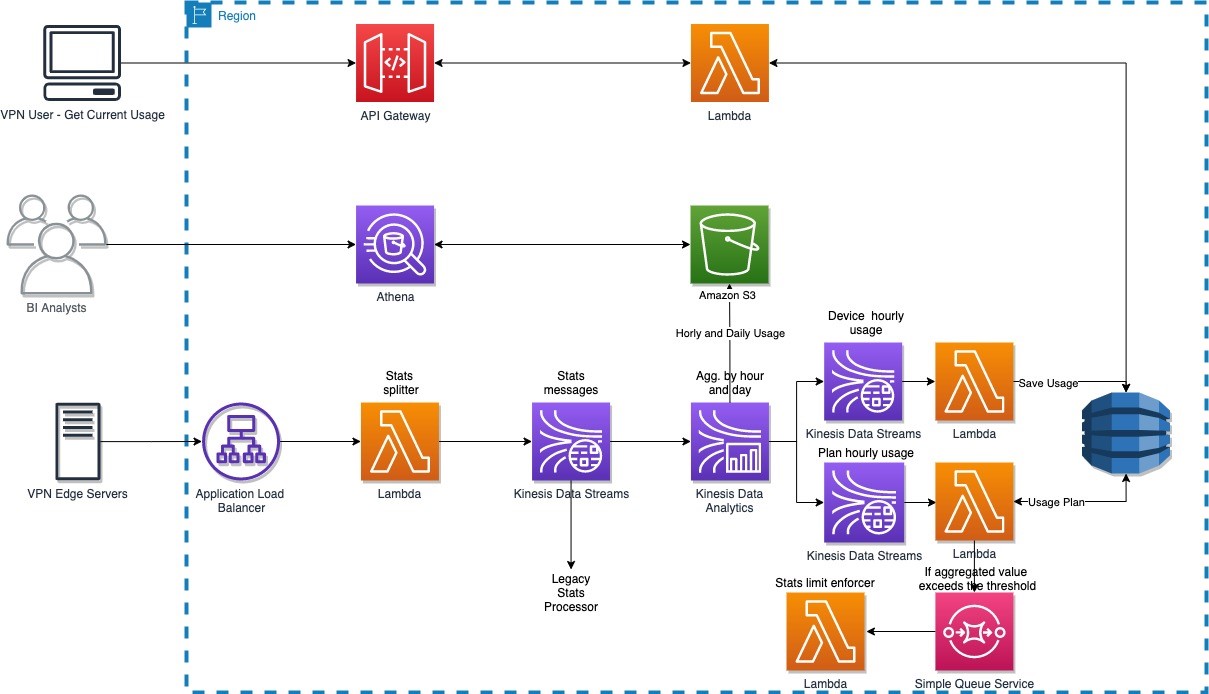AWS Big Data Blog
Category: AWS Glue
Stream data from relational databases to Amazon Redshift with upserts using AWS Glue streaming jobs
Traditionally, read replicas of relational databases are often used as a data source for non-online transactions of web applications such as reporting, business analysis, ad hoc queries, operational excellence, and customer services. Due to the exponential growth of data volume, it became common practice to replace such read replicas with data warehouses or data lakes […]
Build operational metrics for your enterprise AWS Glue Data Catalog at scale
Over the last several years, enterprises have accumulated massive amounts of data. Data volumes have increased at an unprecedented rate, exploding from terabytes to petabytes and sometimes exabytes of data. Increasingly, many enterprises are building highly scalable, available, secure, and flexible data lakes on AWS that can handle extremely large datasets. After data lakes are […]
How Amazon Transportation Service enabled near-real-time event analytics at petabyte scale using AWS Glue with Apache Hudi
This post is co-written with Madhavan Sriram and Diego Menin from Amazon Transportation Services (ATS). The transportation and logistics industry covers a wide range of services, such as multi-modal transportation, warehousing, fulfillment, freight forwarding, and delivery. At Amazon Transportation Service (ATS), the lifecycle of the shipment is digitally tracked and appended to tens of tracking […]
Simplify data integration pipeline development using AWS Glue custom blueprints
June 2023: This post was reviewed and updated for accuracy. August 2021: AWS Glue custom blueprints are now generally available. Please visit https://docs.aws.amazon.com/glue/latest/dg/blueprints-overview.html to learn more. Organizations spend significant time developing and maintaining data integration pipelines that hydrate data warehouses, data lakes, and lake houses. As data volume increases, data engineering teams struggle to keep up with […]
Use Amazon Athena and Amazon QuickSight in a cross-account environment
This blog post was last reviewed and updated in June 2025. Many AWS customers use a multi-account strategy to host applications for different departments within the same company. However, you might deploy services like Amazon QuickSight using a single-account approach, which raises challenges when you need to use QuickSight in combination with Amazon Athena to […]
How NortonLifelock built a serverless architecture for real-time analysis of their VPN usage metrics
August 30, 2023: Amazon Kinesis Data Analytics has been renamed to Amazon Managed Service for Apache Flink. Read the announcement in the AWS News Blog and learn more. This post presents a reference architecture and optimization strategies for building serverless data analytics solutions on AWS using Amazon Kinesis Data Analytics. In addition, this post shows […]
How MOIA built a fully automated GDPR compliant data lake using AWS Lake Formation, AWS Glue, and AWS CodePipeline
This is a guest blog post co-written by Leonardo Pêpe, a Data Engineer at MOIA. MOIA is an independent company of the Volkswagen Group with locations in Berlin and Hamburg, and operates its own ride pooling services in Hamburg and Hanover. The company was founded in 2016 and develops mobility services independently or in partnership […]
Create a custom Amazon S3 Storage Lens metrics dashboard using Amazon QuickSight
Companies use Amazon Simple Storage Service (Amazon S3) for its flexibility, durability, scalability, and ability to perform many things besides storing data. This has led to an exponential rise in the usage of S3 buckets across numerous AWS Regions, across tens or even hundreds of AWS accounts. To optimize costs and analyze security posture, Amazon […]
How MEDHOST’s cardiac risk prediction successfully leveraged AWS analytic services
February 9, 2024: Amazon Kinesis Data Firehose has been renamed to Amazon Data Firehose. Read the AWS What’s New post to learn more. MEDHOST has been providing products and services to healthcare facilities of all types and sizes for over 35 years. Today, more than 1,000 healthcare facilities are partnering with MEDHOST and enhancing their […]
Simplify data discovery for business users by adding data descriptions in the AWS Glue Data Catalog
In this post, we discuss how to use AWS Glue Data Catalog to simplify the process for adding data descriptions and allow data analysts to access, search, and discover this cataloged metadata with BI tools. In this solution, we use AWS Glue Data Catalog, to break the silos between cross-functional data producer teams, sometimes also known […]









